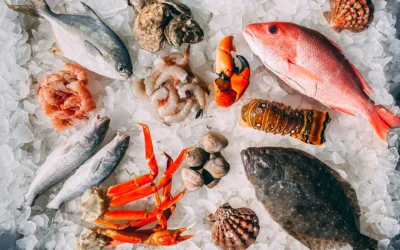Plastic has a significant impact on health and the environment; it is one of the leading causes of ocean debris and marine pollution. However, plastic has taken a step forward to harm humans by building microplastics, becoming a significant threat to marine life and damaging ecosystems.
According to the International Union for Conservation of Nature (IUCN), humans produce about 300 million tons of plastic every year, out of which 14 million tons of plastic end up in the oceans, making 80% of marine debris. Plastic takes hundreds of years to degrade and breaks down into smaller fragments known as microplastics.
Not only oceans but microplastics also impact freshwater and soil sediments. As per a study by the United Nations Environment Programme (UNEP), about one-third of plastic ends up in freshwater and soils, resulting in adverse effects on nature, the environment, and human health. Let’s find out more about microplastics and why they are harmful?
What Are Microplastics?
Microplastics are smaller particles of plastic generally with a size that is less than 5 millimeters. The origin is typically from various plastic products that disintegrate and result in smaller fragments.
Sources such as textile fabrics, filters, personal hygiene products, tires, and other oversized plastic items. Microplastics can be of two types, primary and secondary.
Primary microplastics are initially tiny and have a specific purpose, such as abrasives in skincare products. Secondary microplastics break large plastic products or items into small particles.
Why Are Microplastics Harmful?
Microplastics are harmful in various ways; they are detrimental to human health, marine life, and the environment. When plastic turns into microplastics, they also generate other chemical and physical properties toxic to organisms. Here are some ways in which microplastics can be harmful:
Effects On Marine Life
The effect of microplastics on marine life is harmful as these tiny particles are often consumed by marine animals such as fishes which then enter our food chain through them. Studies done by some laboratories suggest a health impact of microplastics on marine organisms such as mussels and scallops, but only under exposure to a high concentration of microplastics.
According to the study by Plymouth Marine Laboratory UK, the smallest organism in the oceans, known as zooplanktons, have a slow growth rate and struggles to reproduce when exposed to microplastics. They have smaller eggs that have a low chance of being hatched. However, some research suggests that microplastics may have been found in marine organisms but do not significantly impact their lives.
Effects On Human Health
It is widely believed that microplastics are harmful to humans as we consume them in the form of food and water. However, no clear evidence or proof has yet been found to declare microplastics affect human health.
As per the reports of the Group of Experts on the Scientific Aspect of Marine Environmental Protection (GESAMP), while humans may be exposed to microplastics through seafood, they do not have any health risks or impacts on humans. At the same time, scientists also suspect that microplastics may have adverse effects on inflammation, gut microbore, and immunity.
From the deep sea to the surface, plastic and microplastics disturb the natural environment and affect marine life and ecosystems. It is essential to understand that using plastics is harming our environment for the years to come. Hence, production and use need to be cut to save from future hazards and risks.


